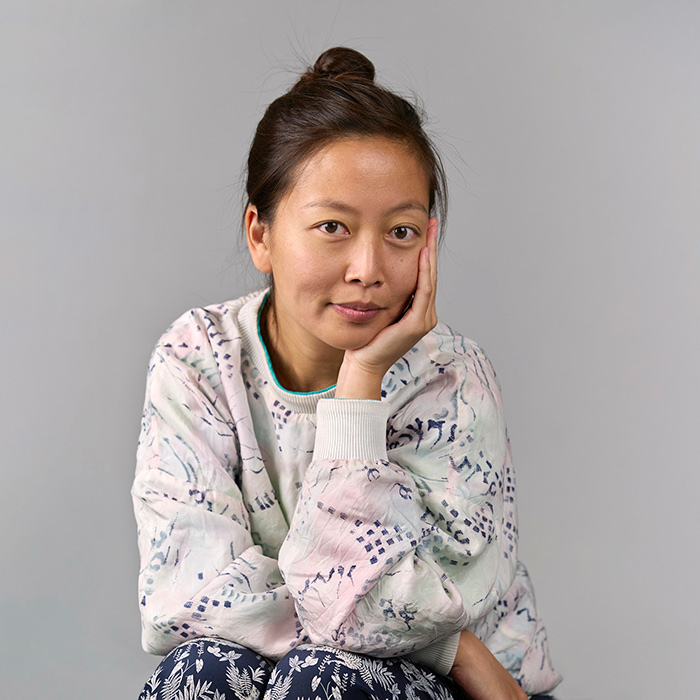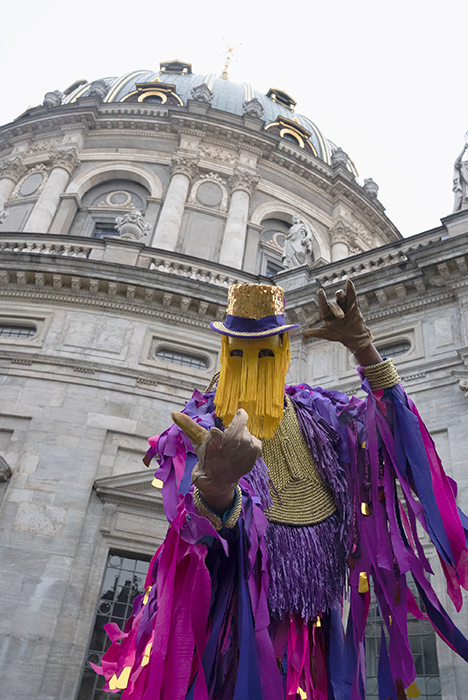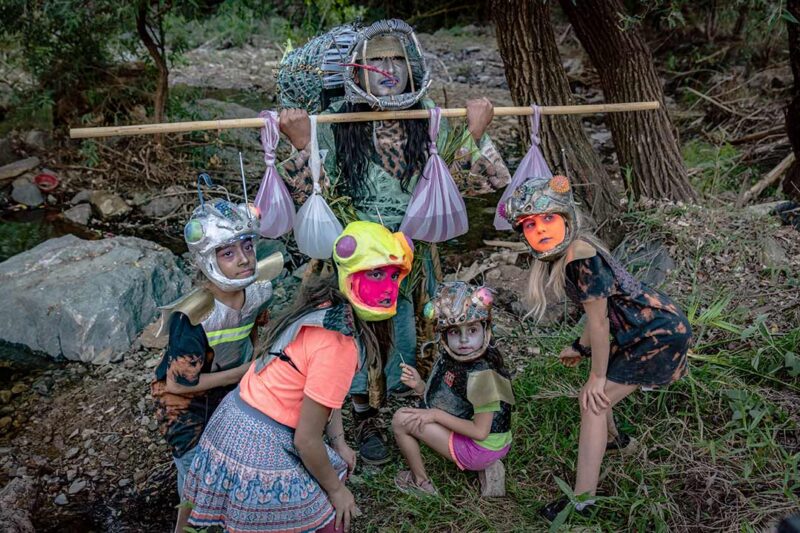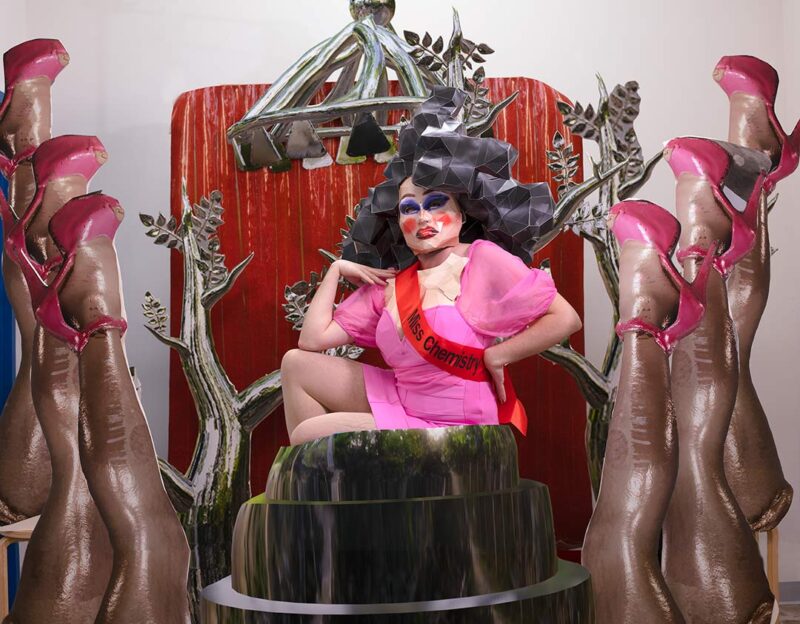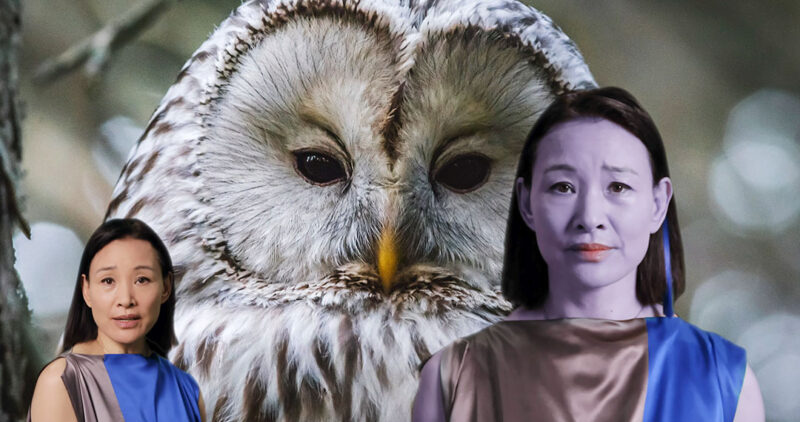[Fall 2023]
Ji-Yoon Han lives and works in Montreal. In her projects, she highlights the relevance of the visual arts and their inscription in moving social, cultural, and mental contexts. She was the curator at Fonderie Darling from 2017 to 2020; currently, she is a research fellow for the Photography and Commission project at the Cabinet de la photographie in Paris. In her PhD dissertation, she examined the competition of images – photographs, Surrealism, and in magazines and advertising – between 1929 and 1936. She is the guest curator for the 18th edition of MOMENTA Biennale de l’image (formerly Le Mois de la photo à Montréal).
Fanny Bieth: You’re the curator of the 2023 edition of MOMENTA, which is titled Masquerades: Drawn to Metamorphosis. Can you talk about this theme? What are the issues around which the program is articulated?
Ji-Yoon Han: Masquerade, attraction, and metamorphosis are concepts that arise from the formation and transformation of identities. There is a fourth concept, somewhat camouflaged in the title, that was fundamental to formulation of the program: mimetics, which means the propensity to do like others – that is, to both reproduce and modify. Within this constellation of reference points, the intention is to set the idea of identity in motion: to question what identity means today and to probe the roles of the image and the gaze in the process of subjectivation, in the context of an art biennial devoted to images. It’s a way of creating intermediary spaces, sites of mediation, in response to the current polarization and fragmentation – even fossilization – of identity-related public discourses. Specifically, Masquerades blurs the boundaries between self and other, visible and invisible, human and nonhuman, to activate the dynamics among what we look at, who we look at, who looks, and what looks.
FB: This relationship between the concepts of identity and otherness, which seems core to the theme, varies from one community and one individual to another. How is this diversity of horizons of comprehension reflected in the program?
JYH: Although each of the twenty-three artists in the Biennale comes from a different culture, it seemed essential to reflect on the question of representation in terms of the works themselves and not simply to rely on biographies – although of course that counts. The notion of mimetics also keeps us from taking a strictly anthropocentric approach to identity, as it transversally describes human, animal, plant, and even mineral relations, as well as technological connections. At the Pôle de Gaspé, for example, you encounter figures in transition that are cuttle sh (Bianca Baldi) or imaginary animals (Bianca Shonee Arroyo-Kreimes); you witness the process of assimilation with the elements – with earth (Maya Watanabe) or stars (Lindsay Katsitsakatste Delaronde); you observe organic or mechanized gestures of material transformation (Carey Young, Anette Rose). Furthermore, confusion is caused by parrots passing for humans (Mara Eagle) or by cyborgs and their avatars that look strangely familiar (Lynn Hershman Leeson).
To return to human identities, I wanted to emphasize that although we all inherit unique histories and cultures, I don’t believe that origin is inherent, like a civic identity or belonging to an ethnic group. It is constructed and captured, often in a collective and branching way. It is this construction that interests me. The artists exhibiting at VOX exemplify this by adopting different strategies with regard to archival images: displacement and appropriation (Marianne Nicolson), pastiche and fiction (Rémi Belliveau), polyphonic narration (Tuan Andrew Nguyen). The question of origins is also posed through the rereading of foundational narratives such as Mesoamerican myths (Naomi Rincón Gallardo), medieval fabliaux (Marion Lessard collective), Atikamekw symbols (Meky Ottawa), and Haudenosaunee cosmology (Lindsay Katsitsakatste Delaronde).
FB: Do you feel that Montreal is a particularly good place to address these issues?
JYH: Yes, certainly. Montreal is a multicultural city; it’s where different artistic and intellectual traditions coexist, are translated and crossbred, and collide. It’s a unique place to think about identity-related instability and its associated power relations. The current era is one of profound collective metamorphoses that impel us to reinvent how we are in the world and with others. This doesn’t happen without tensions and friction, but yes, I think that Tiohtià:ke/Mooniyang/ Montreal is a place that can welcome highly differentiated points of view on identity-related issues, including points of view that are disputed, oblique, or anachronistic.
FB: And what about the many traditional uses of the “mask” implied by masquerade?
JYH: There are ostentatiously masked figures in the Biennale – for instance, Jeannette Ehlers brings Moko Jumbie, a central figure in Trinidadian masquerades, to her work. But perhaps the accent isn’t so much on the mask as an object as on what it makes possible: movement, stories, dance, metamorphosis – what I also call “becoming image.” Speaking of origins, we should perhaps remember here that the word “image” is derived from imago, the Latin word for the wax-moulded mortuary masks in ancient Rome. A mask isn’t limited to what we wear on our face to “become other”; it also encompasses the mediations that put us in relation with the world – the image as skin is a motif that also emerged through my research, and it can be found in works by Valérie Blass, Séamus Gallagher, and Bianca Baldi.
FB: The image seems to occupy a specific position. What status do you give it in the context of curating the Biennale?
JYH: The image is the very reason for my interest in the concept of mimetics. Designing a program through this prism is, in my view, a way of sidestepping the great Western narratives about representation, which are based on models of imitation (mimesis) and reproduction (the fundamental paradigm of the history of photography). Mimetics is connected to both, but I think that it is distinguished by the involvement of the subject who is looking. This relational dimension emphasizes that the gaze is never one-directional – it’s always a scene interwoven between the one looking and the one being looked at. The works by Chris Curreri, Carey Young, and Kristina Norman presented at the Pôle de Gaspé o er striking examples of this.
FB: I get the idea that the question of the audience is really central to the programming and the way you thought of the Biennale.
JYH: What exhibition wouldn’t take account of the audience? But you’re right. Let’s remember that mimetic animals are transformed in the gaze of the other, whether to it’s to trick, attract, elude, or frighten them. This transformation changes the animal that “becomes image,” but it also affects the subject that is looking, that falls prey to the illusion – in this case, us. Mimetic contagion is also a very prominent motif, for example in Émilie Pitoiset’s dance marathons, Hito Steyerl’s dance epidemics, Michèle Pearson Clarke’s choral synchronization, and Valérie Blass’s retinal persistence of striped motifs. This contagion provokes euphoria, ecstasy, and disorientation, but also, perhaps paradoxically, a form of empowerment – which should overflow, I hope, into spectators’ sensory, mental, and physical experience. I’m very attached to the idea that we should not leave these exhibitions untouched. The question of space also quickly seemed decisive; most of the artists in the Biennale work with installation and have original ideas about displaying their works, which means thinking about the circulation of bodies and gazes among images. The format of the Biennale this year, by privileging solo exhibitions, allows each project to have its own space.
FB: Between the lines of this edition’s presentation, there’s a certain connection with joy, even celebration, but also with an idea of resistance: two ways of making community and doing politics. Can you talk about these aspects?
JYH: I could talk about Naomi Rincón Gallardo, whose politically engaged works, conceived as the last non-capitalizable, nonrecyclable spaces in society, sit at the juncture of celebration and enjoyment (perhaps more than joy). What we see, what is represented in the works, is the ritual of celebration, but the ritual is also a principle of ethical work among people who collaborate in the very process of creation. The result is a very energetic – cathartic and unifying – body of work. But it must also be said that this energy is imbued with rage, stridency, and heartbreak. Contagion, infiltration, venom, and nightmare are all active forces in the work. This idea of nonconforming, anti-normative, and somewhat irksome celebration is also strong for siren eun young jung, who has been working for a long time on Yeoseong Gukgeuk, Korean traditional women’s theatre.
Masquerade, which is in fact a celebration of the reversal of the established order, a celebration that allows us to be something besides ourselves, thus incorporates the political dimension of resistance. One could say that its enacted function is to temporarily provoke disorder with a view to consolidating the established social order and hierarchy; at the same time, it’s really a space for experimentation and reinvention, and I hope that a biennial can also o er such spaces – for individuals, because I think that the works address intimate sensibilities, but also for communities, through the conversations, responses, and debates that the programming should prompt. Translated by Käthe Roth
Fanny Bieth is an author and a doctoral student in art history, specializing in photographic studies, at UQAM. In her research, she looks at the relations between psychiatry and the media of photography and film. She is the publishing coordinator for the magazine Captures.

